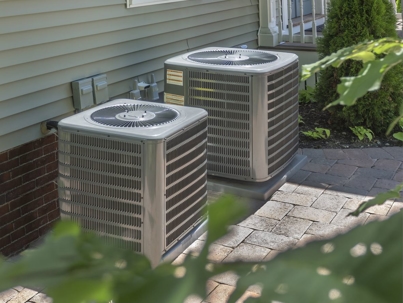Improve Your Homeandrsquo;s Comfort and Air Quality
Are you looking for ways to feel more comfortable when itandrsquo;s cold out without constantly running your heater? Or, are you spending a fortune on heating costs but still struggling to get the right balance? If so, you are not alone. During the coldest months of the year, typically January and February in the Bay area, it can be challenging to get your home warm enough without it being dry and stuffy. Luckily, Valley Heating, Cooling, Electrical and Solar is here to help!
Ways to improve your heaterandrsquo;s effectiveness:
- Ensure proper air circulation and ventilation
- Donandrsquo;t forget to change your filters
- Pay attention to your heating habits
- Balance the humidity in your home
Below, we discuss each of these and more. Keep reading to get started on improving the performance of your heating system today.
The Best Temperature for Your Heater in the Winter
Whether youandrsquo;re looking for optimal comfort or a way to optimize your energy consumption and save money, there is an ideal temperature at which to set your heater or furnace. For most people, when you are home, it is best to put your heater around 68 degrees and no more than 72 degrees. When youandrsquo;re at home, especially if youandrsquo;re cooking and moving around, 68 degrees is typically warm enough that you donandrsquo;t overheat and your home wonandrsquo;t become too stuffy. But itandrsquo;s not so warm that your heater will have to run constantly to maintain that temperature, even when itandrsquo;s cold outside.
In the evening, it is recommended to drop the thermostat lower, aiming for something around 65 degrees, but no lower than 58 degrees. In fact, you may be surprised to discover that you sleep better when itandrsquo;s cooler. However, if you have an infant, small children or elderly relatives, it is advised to keep your thermostat set between 68 and 72 degrees.
The Impact of Airflow and Ventilation
If you have ever lived in a home or apartment with poor air circulation, you know how uncomfortable it can be in the winter. Some rooms are stuffy and hot, while others feel like a meat locker. Air circulation and ventilation greatly impact how comfortable you are and how effective your heating system is. When air cannot move freely, warmed air from your heater will get trapped in one area, creating an imbalance. You then end up running your system significantly longer as the air struggles to reach the other areas of your home.
Ways to improve airflow in your home:
- Make sure all vents and registers are open and pointing in the correct direction
- Use ceiling fans and ensure they are rotating clockwise to help push warmed air down
- Keep interior doors open whenever possible to encourage airflow between rooms
- Replace your air filters every three months
- Use portable air filters or fans in areas where HVAC airflow is limited or non-existent
If you are in a situation where your home has worse-than-average airflow and none of the above methods are helping, it might be worth installing a whole-home ventilation fan. Give Valley a call to discuss your situation and find the best solution for you.
Pay Attention to Your Schedule and Heating Habits
While indoor air quality and comfort can suffer in the winter, we have found that the number one culprit is the overuse of the heating system. If youandrsquo;ve seen a significant drop in your homeandrsquo;s air quality, are struggling with stuffy, dry air and are seeing your utility bills climb higher each month, we recommend stepping back and taking a look at your heating habits and your day-to-day schedule. This will be especially important if you have a smart thermostat with intuitive scheduling features.
For a few days or up to a week, note the periods when youandrsquo;re regularly home, how often you turn on your heating system (or how often it turns itself on) and what temperatures you are setting. You may notice that your system is either running too often or youandrsquo;re waiting too long to turn it on, causing it to run significantly longer as it works to bring your home up to the right temperature.
We recommend that you work to keep a stable thermostat setting so that your homeandrsquo;s temperatures do not swing back and forth. This will also mean your system runs less often and for a shorter period, as it will not be trying to compensate for wide temperature deviations.
Consult the Experts
If you are struggling to keep your home comfortably warm this winter, give the experts at Valley a call. Our heating maintenance and repair technicians are well-versed in all major makes and models of heating systems and we can help you figure out the best approach to improving your homeandrsquo;s comfort levels.
Fill out our online contact form to schedule an appointment with a member of our team.

